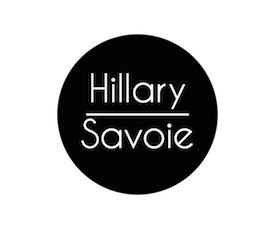It is Feeding Tube Awareness Week! Last year I still felt like a bit of a new Tubie Mama. This year I am starting to feel like a veteran.
I really do love Ezzy’s tube…but I haven’t always. It is quite amazing how much emotion a little tiny plastic device can inspire: fear, hope, frustration…
As some of you know, Ez got her feeding tube when she was almost four months old, after having aspirated chronically for most of her life and acutely, at three and half months, severely enough to cause double aspiration pneumonia which lead to cardiac and respiratory arrest. While inpatient in the Pediatric Intensive Care Unit (PICU) it was decided that it was unsafe to feed Esmé by mouth because she was aspirating (breathing in rather than swallowing) a good deal of what she ate by mouth. Additionally, she was refluxing and then aspirating her reflux. As a result, the hospital recommended the placement of an abdominal feeding tube (G tube) in order to by-pass Esmé’s mouth and esophagus and deliver food directly to her stomach. They also recommended a second procedure to prevent reflux: a nissen fundoplication. In this procedure, sometime referred to as a “nissen,” “fundo,” or “nissen fundo,” a portion of the stomach is wrapped around the lower esophageal sphincter in order to prevent/reduce the passage of stomach contents back up the esophagus. It does, however, still permit food to pass down the esophagus.
Esmé had also had another form of feeding tube, a nasogastric (NG) tube, which is a tube placed in the stomach through the nose, when she was in the Neonatal Intensive Care Unit (NICU) at birth. However, while some people use these tubes more permanently, for Ez it had been a temporary measure. This was what I imagined when we first heard about feeding tubes prior to Esmé’s aspiration when she was about to be labeled “Failure to Thrive” due to poor growth. Until we were in the PICU I had no idea that permanent tubes could be placed in a child’s (or adult’s) abdomen.
When they explained the surgery and what the feeding tube would do, I was at a complete loss. All I could think about was the perfect soft skin on my girl’s belly…interrupted by a permanent opening, a wound…and what it would be like to face life with this tube outside the walls of the hospital. But, it was clear there was no way around it. It was necessary to keep our precious girl safe. So we consented.
And after a short recovery period for the g tube placement–which is a very minor procedure–and the nissen–which was a much more complicated procedure that produced a large wound from Esmé’s sternum to her belly button, we were sent home. We were given very little guidance, honestly. It felt like we were going home with a newborn all over again. But unlike when one becomes confused or a afraid with a new small child and doesn’t know what to do, there were not thousands of books and websites to help us. We had no other friends or family who had experienced this situation…we were making it up as we went along.
I felt terribly isolated.
Fortunately for me I found a wonderful support network online through Feeding Tube Awareness and Mommies of Miracles…where my late-night panicked questions about all things tubie were answered by veteran moms and dads. And, honestly, before I knew it I was offering advice…what meds we had tried, what pump we used, venting and feeding procedures…as we fell into our own pace with the tube.
But, admittedly, for a long time I “tolerated” the tube. I was thankful for it. I was proud of it. But for much of the first year with our tubie I felt very dedicated to getting rid of it. But in order to do this, it meant that Esmé would need to eat all of the calories necessary for her growth safely by mouth.
The problem was that even though she was getting stronger–and thus more likely to be able to eat safely–she would not open her mouth to food.
Some people who have feeding tubes of one variety or another can still eat, others will not, cannot, or are not permitted. Esmé fell into all three of the last categories. The doctors labeled her “NPO” which means that she was not permitted to eat anything by mouth, for fear of her aspirating. Once she was stronger we were allowed to experiment slowly, with the help of our speech and feeding specialist, Esmé was to be allowed micro tastes of purée in order to strengthen and coordinate her muscles and to get her interested in food. But she would not accept these tastes. For quite awhile just the sight of a spoon made her gag, retch, and sputter. A psychological reaction to “oral aversion” after having been traumatically intubated without medication multiple times (since the resident making the attempts was unable to get it done on the first, second, third, or fourth tries).
When she would finally try tastes, it was clear she lacked the coordination to swallow safely…physically and psychologically.
And herein lies the problem. In order to eat safely you must practice. Every day that went by Esmé was losing the very primal suck and swallow reflexes we take for granted. But practicing was both potentially unsafe and a tremendous stress.
While, with time, patience, and determination Esmé began eating by mouth, eventually taking about a quarter of her calories by mouth by around 16 months, the onset of increasingly severe seizures set her back tremendously…and she no longer regularly eats anything by mouth.
While I do hope that Esmé will eventually be able to join us in family meals, tasting and enjoying new and exciting flavors, I no longer long to be without her tube. I suppose I am just used to it now…I do forget that other parents don’t have the convenience of being able to give their child extra calories when they sleep, or hydrate them when they are too sick to want to drink, or vent them when their tummy hurts. And, importantly, now that Ez has the seizures, it guarantees that we get her medications into her body when we need to.
I no longer worry about when we will be free of her tubie.
In fact, now I can only think how weird it would be if someday she didn’t have it anymore.

